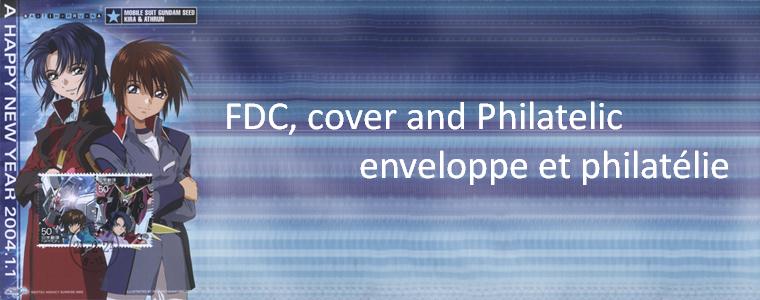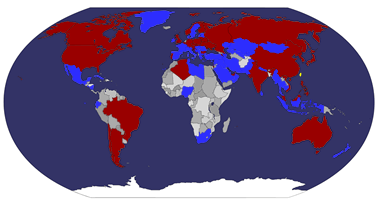Le 500ème ANNIVERSAIRE DE LA MORT d'IVAN DUKNOVIĆ
 Motif: a statue of St John Evangelist, carved for the chapel of the blessed John of Trogir in the Trogir cathedral, 15th century, photo by Živko Bačić Ivan Duknović (Joannes Duhnovich, Ioannes Dalmata), born around 1440 in Trogir, died after 1509, his father’s name Stjepan, is among the most important builders of the cathedral in Trogir. His first knowledge of carving traditions were acquired at home but later on he improved his skill in Italy. In 1470 in Rome he was commissioned several important works, particularly important was a commission from cardinal Pietro Barba, who was later elected Pope Paul II., for whom he carved a tomb (along Mina da Fiesole) in the old basilica of St Petrus, which was the most important work of that kind of the entire 15th century. Unusual resonance of a glory in the Eternal City helped him to another commission, expressed in the Pope’s testament, a figure of Our Lady with a Child high up on the tomb of Pope Paulus II. At the begining of 1480 Duknović works in his native city of Trogir. The first selfstanding three dimensional sculpture in Croatia is a statue of St John Evangelist, carved for the chapel of the blessed John of Trogir in the cathedral. The sculpture is carved at the peak of Dukonovic’ creative life. This great artist probably a sanguine person, in his work reflected the balance between the resonance of a strong composition and psychological intuition, between formal idealisation (reflected in the posture of the statue and shaping of soft fabric) and realism in the expression of physiognomy. The signature at the base of the sculpture (probably additinaly carved) should read in continuo with the signature: S . IOANNES . EVANGELISTA . IOANNIS . DA(L)MATAE . F(ACTUM). – St John carved by the sculptor John – identical to the master’s signature on his most accomplished work , on the base of the relief Hope, executed on the tomb of the Pope Paulus II., where it is written: (I)OANNIS . DALMATE . OPUS. The profile of the statue erected in the chapel of the Blessed John is identical to the profile of a Nicolo Fiorention’s relief in the „Little“ palace of the Čipiko family in Trogir, of Alvizo Cipiko, wreathed poet and later a prelate of a Roman court, from the time when his famous father Koriolan wanted to see him appointed a bishop. Terminus ante quem non and a model for Duknović’ statue is St Philip by Nicolo Fiorentino (1489) errected in the chapel. If we examine the fabric of drapes of Duknović’ Apostle Toma (1508) –it is in some kind of a dialogue with the statue of John the Evangelist. After working some time in his native land Duknović was employed for several years at the court of King Matthias Corvinus of Hungary, who presented him the palace Majkovecz as a gift in 1488. After the King’s death, Duknović is mentioned in some documents to be in Trogir in 1497and in 1498 in Venice. He might be «Joane de Stano da Trau“ the author of the altar in the Scuola Grande di S. Giorgio, however the altar could also be the work of a famous artist from Trogir – Ivan Statilić. He created some of the anthological works of Croatian sculpture and was the most prominent artist of Croatian Renessaince art. Just to metion some of the reliefs: Our Lady on display in the museum in Padua and Trogir city museum, statue of St Vlaho in Dubrovnik’ Princes Palace, the bust of the humanist Carlo Zena in the Venetian Museo Correr and – probably the last – tomb of the blessed Girolama Gianelli in the cathedral in Ancona. Also the Charming putto hump-back on the main portal of the Cipiko palace (also the work of Duknović), just oposite the Trogir cathedral, is one of the trade marks of the Croatian Renaissance and the most precious artefact of the City Museum in Trogir. Putto holding a torch in flames standing astride on the gally, with the cloak fluttering in the wind, hinting obviously to the function of Koriolan Cipiko in the Venetian fleet in Levant (1470-1474). A three dimensional sculpture made in the manner of the motives from Ancient Times is linked to a similar sculpture of Heraklo as a boy, carved some time later by Duknović on the fountain at the court of Matthias Corvinus in Višegrad. Duknović’ opus, presently on display in Berlin and Paris, Rome and Budapest, Trogir and Dubrovnik, gives an authentic picture of the highest intelectual and artistic range of sculptures carved in close relation to demanding comissioners and artists educated in the very epicentre of the European Renessaince. The artist who became famous thanks to collaborating with several sculptors from Toscana and who suceeded to preserve genuine individual expression and even more who succeded to express his genuine temperament.
Motif: a statue of St John Evangelist, carved for the chapel of the blessed John of Trogir in the Trogir cathedral, 15th century, photo by Živko Bačić Ivan Duknović (Joannes Duhnovich, Ioannes Dalmata), born around 1440 in Trogir, died after 1509, his father’s name Stjepan, is among the most important builders of the cathedral in Trogir. His first knowledge of carving traditions were acquired at home but later on he improved his skill in Italy. In 1470 in Rome he was commissioned several important works, particularly important was a commission from cardinal Pietro Barba, who was later elected Pope Paul II., for whom he carved a tomb (along Mina da Fiesole) in the old basilica of St Petrus, which was the most important work of that kind of the entire 15th century. Unusual resonance of a glory in the Eternal City helped him to another commission, expressed in the Pope’s testament, a figure of Our Lady with a Child high up on the tomb of Pope Paulus II. At the begining of 1480 Duknović works in his native city of Trogir. The first selfstanding three dimensional sculpture in Croatia is a statue of St John Evangelist, carved for the chapel of the blessed John of Trogir in the cathedral. The sculpture is carved at the peak of Dukonovic’ creative life. This great artist probably a sanguine person, in his work reflected the balance between the resonance of a strong composition and psychological intuition, between formal idealisation (reflected in the posture of the statue and shaping of soft fabric) and realism in the expression of physiognomy. The signature at the base of the sculpture (probably additinaly carved) should read in continuo with the signature: S . IOANNES . EVANGELISTA . IOANNIS . DA(L)MATAE . F(ACTUM). – St John carved by the sculptor John – identical to the master’s signature on his most accomplished work , on the base of the relief Hope, executed on the tomb of the Pope Paulus II., where it is written: (I)OANNIS . DALMATE . OPUS. The profile of the statue erected in the chapel of the Blessed John is identical to the profile of a Nicolo Fiorention’s relief in the „Little“ palace of the Čipiko family in Trogir, of Alvizo Cipiko, wreathed poet and later a prelate of a Roman court, from the time when his famous father Koriolan wanted to see him appointed a bishop. Terminus ante quem non and a model for Duknović’ statue is St Philip by Nicolo Fiorentino (1489) errected in the chapel. If we examine the fabric of drapes of Duknović’ Apostle Toma (1508) –it is in some kind of a dialogue with the statue of John the Evangelist. After working some time in his native land Duknović was employed for several years at the court of King Matthias Corvinus of Hungary, who presented him the palace Majkovecz as a gift in 1488. After the King’s death, Duknović is mentioned in some documents to be in Trogir in 1497and in 1498 in Venice. He might be «Joane de Stano da Trau“ the author of the altar in the Scuola Grande di S. Giorgio, however the altar could also be the work of a famous artist from Trogir – Ivan Statilić. He created some of the anthological works of Croatian sculpture and was the most prominent artist of Croatian Renessaince art. Just to metion some of the reliefs: Our Lady on display in the museum in Padua and Trogir city museum, statue of St Vlaho in Dubrovnik’ Princes Palace, the bust of the humanist Carlo Zena in the Venetian Museo Correr and – probably the last – tomb of the blessed Girolama Gianelli in the cathedral in Ancona. Also the Charming putto hump-back on the main portal of the Cipiko palace (also the work of Duknović), just oposite the Trogir cathedral, is one of the trade marks of the Croatian Renaissance and the most precious artefact of the City Museum in Trogir. Putto holding a torch in flames standing astride on the gally, with the cloak fluttering in the wind, hinting obviously to the function of Koriolan Cipiko in the Venetian fleet in Levant (1470-1474). A three dimensional sculpture made in the manner of the motives from Ancient Times is linked to a similar sculpture of Heraklo as a boy, carved some time later by Duknović on the fountain at the court of Matthias Corvinus in Višegrad. Duknović’ opus, presently on display in Berlin and Paris, Rome and Budapest, Trogir and Dubrovnik, gives an authentic picture of the highest intelectual and artistic range of sculptures carved in close relation to demanding comissioners and artists educated in the very epicentre of the European Renessaince. The artist who became famous thanks to collaborating with several sculptors from Toscana and who suceeded to preserve genuine individual expression and even more who succeded to express his genuine temperament.

































 taiwan
taiwan  cover or postcard
cover or postcard  FDC
FDC 






























































































1 comment:
Post a Comment